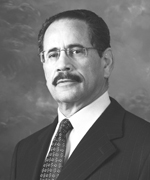Ruling challenges prevailing view of pension law
Three appeals court justices, citing the alarming view of critics that unaffordable public pensions are headed for the financial cliff, looked for a new way to allow a change in direction and found one.
In a ruling in a Marin County case last August that reformers called a “game changer,” the panel weakened the “California rule” protecting the pensions of current workers. Most cost-cutting reforms have been limited to new hires, which can take decades to yield savings.
One reason unions asked the state Supreme Court to review the new ruling last month is that another three-justice panel, also from the first district appeals court, made an opposite ruling in a San Francisco case last year.
“Not only does the court of appeal opinion conflict with sixty years’ worth of California Supreme Court precedent, it flies in the face of a decision by the same district court of appeal only a year ago,” said the union appeal, arguing that “unanimity of decision” is needed on “vested pension rights doctrine.”
The California rule stems from a state Supreme Court ruling in 1955(Allen v. City of Long Beach) that the pension offered at hire becomes a vested right, protected by contract law, that can only be cut if offset by a comparable new benefit, erasing employer cost savings.
Pension cuts for current workers in the Marin and San Francisco cases were an attempt to curb employer pension costs that soared after heavy pension fund investment losses during the recession and financial crisis in 2008.
The ruling in the San Francisco case overturned most of a voter-approved cut in a supplemental COLA for pensions, citing the California rule that a pension cut must be offset by a new benefit. The state Supreme Court declined to hear an appeal.
The Marin ruling allows the county, with no offsetting new benefit, to impose “anti-spiking” state legislation enacted in 2012 that prevents current workers from continuing the previously authorized boosting of pensions with standby pay, call-back pay, and other things.
Some suggest the Marin ruling could lead to cuts in pensions current workers earned in the past, even though the ruling is “limited” and the case is about pensions earned in the future. Uncertainty about what could be cut is another reason unions want a high court review.
The California rule, adopted by courts in a dozen other states, is unusal for a number of reasons. Cuts in the pensions that will be earned by current workers in the future are allowed in the dwindling number of private-sector pensions.
Pensions are regarded as deferred salary. Government employers can cut salary, but under the California rule they cannot cut pension amounts current workers will earn in the future, unless there is a comparable new benefit.
“This interpretation is contrary to federal Contract Clause jurisprudence, which holds that prospective changes to a contract should not be considered unconstitutional impairments,” argues Amy Monahan, a legal scholar.
Her 64-page paper, “Statutes as Contracts? The ‘California Rule’ and Its Impact on Public Pension Reform,” is mentioned by reformers such as former San Jose Mayor Chuck Reed, who think cutting pensions not yet earned is the key to curbing runaway pension costs.
Monahan argues, according to an abstract of her article, that California courts have not explained the “basis” for the California rule and have “improperly infringed on legislative power” with “a rule that is inconsistent with both contract and economic theory.”
The state Supreme Court ruling in the 1955 Allen v. Long Beach case gives little or no explanation of why cuts in pensions not yet earned by time on the job should be offset by a comparable new benefit. The main part of the ruling is a single sentence:
“To be sustained as reasonable, alterations of employees’ pension rights must bear some material relation to the theory of a pension system and its successful operation, and changes in a pension plan which result in disadvantage to employees should be accompanied by comparable new advantages.”
Monahan said the court “merely stated the new rule” and as support cited two appellate court rulings that mention the theory of a pension system and note that certain detrimental changes were offset by new advantages.
“It is unclear why the Allen court chose to make these appellate court observations part of a new rule regarding pension modification,” Monahan said. “The Allen case is a bombshell.”
The Marin ruling does not argue that the standard-setting Allen ruling is invalid but, like the San Francisco ruling, follows the common law procedure of citing previous rulings, intended to ensure that similar facts yield similar outcomes.
Still, the Marin and San Francisco rulings cite dozens of previous rulings, though often not the same ones, while following their presumably logical legal paths that take them to opposite conclusions.
Justice Richman
“There is no absolute requirement that elimination or reduction of an anticipated retirement benefit ‘must’ be counterbalanced by a ‘comparable new benefit,” said the Marin ruling written by Justice James Richman and concurred in by Justices J. Anthony Kline and Maria Miller.
“This diminution in the supplemental COLA cannot be sustained as reasonable because no comparable advantage was offered to pensioners or employees in return,” said the San Francisco ruling written by Justice Henry Needham and concurred in by Presiding Justice Barbara Jones and Justice Mark Simons.
Justice Needham
The San Francisco ruling briefly notes that during the financial crisis the city pension fund plunged from 103 percent funded (market value) in 2008 to 72 percent a year later. A reform approved by 69 percent of voters in 2011 cut costs by limiting a supplemental COLA to years when the system was fully funded.
The supplement adding up to 3.5 percent to the standard cost-of-living adjustment for retirees of up to 2 percent, depending on inflation, had been awarded when pension fund investments during the previous year exceeded expected earnings, then 7.5 percent.
Skimming off “excess” earnings is questionable management, because the excess is needed to offset years with earnings shortfalls or losses. But the San Francisco pension system, which requires voter approval of pension increases, historically has been well funded.
Employers were given a contribution “holiday” from 1996 to 2004, making no payments into the pension fund, another example of questionable management. Measure C in 2011 was supported by all 11 county supervisors and business and labor groups.
A retiree suit to overturn the measure was called “the epitome of greed” by the president of the police union. A superior court ruling upheld the measure, concluding full funding was assumed when voters approved the supplement in 1996, then later increased the supplement and made it permanent.
The appeals court panel found no evidence that full funding had been a condition for the supplement. Following the California rule on vested rights, the panel said the supplement can’t be cut for workers retiring after 1966, but “may” be cut for workers retiring before then.
Last July, the San Francisco retirement board, pointing to the permissive “may,” restored the full supplement for those retiring before 1966. City Controller Ben Rosenfield sued the board for defying the will of voters.
Rosenfield told the San Francisco Chronicle a full supplement for 8,300 workers who retired before November 1966 will cost the city $200 million over the next five years. A superior court enjoined the board action last week.
The Marin ruling, making the case for cost reduction, begins with a look at the “emergence of the unfunded pension liability crisis.” A number of national and state reports on the issue are mentioned in a “background” section.
“In the aftermath of the severe economic downturn of 2008-2009,” said the ruling, “public attention across the nation began to focus on the alarming state of unfunded public pension liabilities.”
(An annual Milliman actuaries report last week said the 100 largest U.S. public pension systems were on average only 70 percent funded as of June 30, with a debt or unfunded liability of $1.38 trillion.
(The giant California Public Employees Retirement System, which does not include the Marin and San Francisco systems, was an estimated 68 percent funded last June with an unfunded liability of $139 billion.)
The longest look in the Marin ruling background section is at a report by the Little Hoover Commission in 2011 warning that “aggressive reforms” are needed to prevent growing pension costs from reducing government services and forcing layoffs.
“To provide immediate savings of the scope needed, state and local governments must have the flexibility to alter future, unaccrued retirement benefits for current workers,” the commission said in its top recommendation.
The Marin ruling cites a number of past court rulings that allowed cuts in the pensions of current workers to give the pension system the flexibility to adjust to changing conditions and preserve “reasonable” pensions in the future.
The previous rulings allowed increases in pension contributions, changes in retirement ages, repeals of COLAs, changes in required service years — even reduction of pensions in 1938 from two-thirds to one-half of salary.
Some public pension lawyers are alarmed by a comment in the Marin ruling on a 1967 appeals court ruling (Santin v. Cranston): “Until retirement, an employee’s entitlement to a pension is subject to change short of actual destruction.”
The Marin ruling said the 1955 Allen v. Long Beach ruling that said pension cuts “should” have a comparable new benefit was changed to “must” in a 1983 state Supreme Court ruling. But all Supreme Court rulings since then say “should” have a new benefit.
“It thus appears unlikely that the Supreme Court’s use of ‘must’ in the 1983 (Allen v. Board of Administration) decision was intended to herald a fundamental doctrinal shift,” the Marin ruling said, citing two rulings that “should” is advisory not compulsory.
In addition, the Marin ruling said the legislative cut in “spiking” gives Marin County employees a new benefit. Employee contributions that helped pay for the “spiking” provisions will no longer be deducted from their paychecks.
“Put simply, the new benefit is an increase in the employee’s net monthly compensation,” said the Marin ruling. “Put even more simply, it is more cash in hand every month.”
A post on the Reason Foundation website by an Emory Law School professor who has studied the California rule, Alexander Volokh, reviews four related cases and suggests the Marin ruling may be reversed.
Volokh argues that some of the previous rulings showing flexibility in the California rule were based on “highly unusual historical circumstance” not present in the Marin case. He said an employee near retirement would only have “more cash in hand” for a short period.
Comparable new benefits were granted in some of the cases cited in the Marin ruling, Volokh said, and other cases refused to make an exception for fiscal emergencies, since they were the government’s own fault and could be remedied by tax increases.
“Anthing can happen on appeal, but it wouldn’t be surprising to see this decision reversed by the Supreme Court,” Volokh said. The Supreme Court has at least 60 days to accept or reject the union appeal for a review of the Marin ruling, received Sept. 28.
Similar consolidated union suits against the Alameda, Contra Costa and Merced county pension systems have been briefed in appeals court but no date for oral arguments has been scheduled.
Reporter Ed Mendel covered the Capitol in Sacramento for nearly three decades, most recently for the San Diego Union-Tribune. More stories are at Calpensions.com. Posted 10 Oct 16




